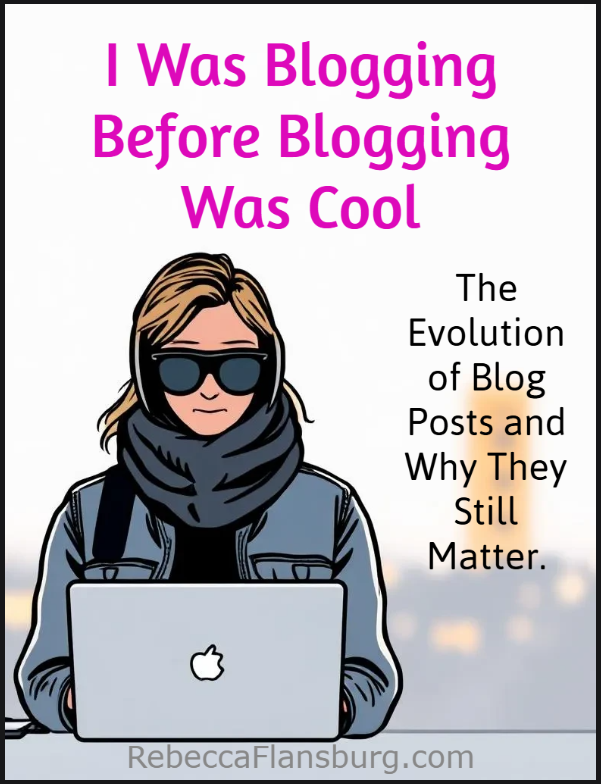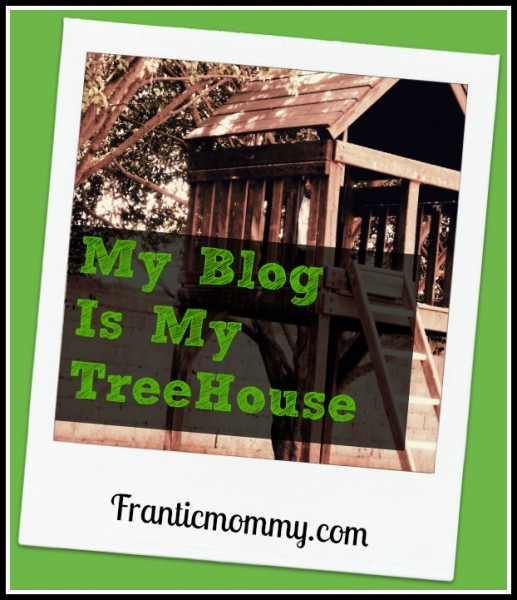**The posts I write might contain affiliate links or be written in collaboration with businesses or brands. Please see my disclosure policy for more information.**
Sometime in the late 1990s/early 2000s, I decided to dip a toe into the relatively new pond called blogging.
Back then, there weren’t many blogging platforms to choose from, so I chose the free one called Blogger. It was simplistic and didn’t have many (if any) of the bells and whistles writers are used to seeing now on sites like WordPress, Substack, and Squarespace. Blogger.com was notoriously fickle, and horror stories of writers spending years pouring their heart and soul into their Blogger blogs only to have everything disappear were not uncommon.
But, I was so determined to find an outlet for my writing and creativity that I plowed ahead. I had always loved writing, and my blog was like my treehouse. It was my happy place to be raw, weird, and unfiltered without any pushback.
As you can tell from the image above, my blog name has also morphed and changed over the years. My first blog name (in my Blogger.com days) was Scroungequeen: Queen of the Kingdom of Tired. I still love that name so hard.
Then it morphed into the kinda-more-mature Franticmommy.com. From there, I rebranded myself again to reflect my current focus: coaching and supporting small businesses and authors such as RebeccaFlansburg.com. This WordPress.org website is now my home base for all things writing, and I don’t plan on stopping any time soon.

The Evolution of Blogging: From Online Journals to Digital Powerhouses
Once upon a time, blogging was a digital version of a diary—personal, raw, and often just for fun. People wrote about their day, shared opinions, and maybe posted a few blurry photos taken with a flip phone. Fast-forward a couple of decades, and blogging has become a sophisticated and strategic tool used by individuals, brands, and businesses worldwide.
Let’s take a quick look at the evolution of blogging and how it’s become one of the most potent forms of communication in the digital space.
The Early Days: Online Diaries and Forums
Blogging, as we know, began in the late 1990s. Back then, it was often referred to as a “weblog” (a combination of “web” and “log”). These early blogs were typically informal, personal journals where people shared thoughts, experiences, and commentary on life. Platforms like LiveJournal and Blogger made it easy for anyone with an internet connection to start writing and connecting with readers.
There were no SEO strategies or brand guidelines—just authentic, unfiltered storytelling.
The 2000s: The Rise of the Blogger
As the internet grew, so did the blogging community. The early 2000s saw a boom in niche blogging—food blogs, travel blogs, tech reviews, fashion diaries—you name it. Suddenly, people realized they could build loyal audiences around shared interests. Some even began to monetize their content through ads and sponsorships.
At this point, blogging started to shift from a hobby to a profession. Influencers were born. And brands began paying attention.
The Business Era: Blogging as a Marketing Engine
Blogging became a key component of digital marketing around the 2010s. Companies realized that maintaining a blog wasn’t just a nice extra—it was a smart, cost-effective way to boost visibility, build trust, and drive traffic.
Enter content marketing.
Businesses started using blogs to:
- Educate customers
- Show thought leadership
- Improve search engine rankings (hello, SEO!)
- Nurture leads and build brand authority
Blog posts became more polished, optimized, and strategic. Teams began to include content writers, editors, SEO specialists, and social media managers, all working together to create high-performing blog content.
Today: Blogs as Multi-Purpose Content Hubs
Today, blogs are anything but one-dimensional. A well-run blog is a hub for thought leadership, storytelling, brand identity, and customer engagement. It supports everything from email marketing to social media and podcasts to YouTube content.
Modern blogs:
- Are visually rich and mobile-friendly
- Integrate video, audio, and interactive elements
- Use data and analytics to guide strategy
- Focus on delivering real value to the reader
What’s more, the line between blogs and media outlets has blurred. Some bloggers have built platforms as influential as traditional publications, with the power to shape opinions and trends.
Where Blogging is Headed
Blogging isn’t going anywhere—it’s just continuing to evolve. As AI tools, voice search, and immersive content (like AR/VR) become more mainstream, we’ll likely see blogs adapt to stay relevant and engaging.
What won’t change is the core of what makes blogging work: genuine, valuable content that connects with people.
Whether you’re a business using a blog to drive growth or an individual using it to express your voice, blogging remains a powerful tool in the digital toolbox.
Final Thoughts
From personal journals to polished content engines, blogging has evolved significantly. Its evolution reflects how we communicate, connect, and consume information online. In an age where authenticity and trust matter more than ever, a well-written blog post still has the power to spark conversation, drive traffic to your website, showcase your credibility, build relationships, and create impact.
So, if you think blogging is outdated, think again. It’s not just alive and well; it’s thriving.


